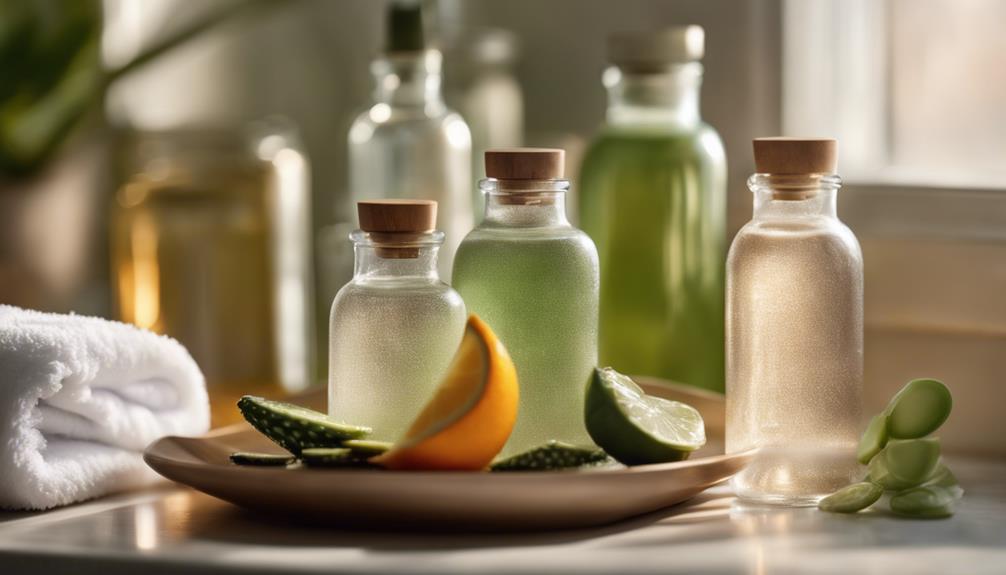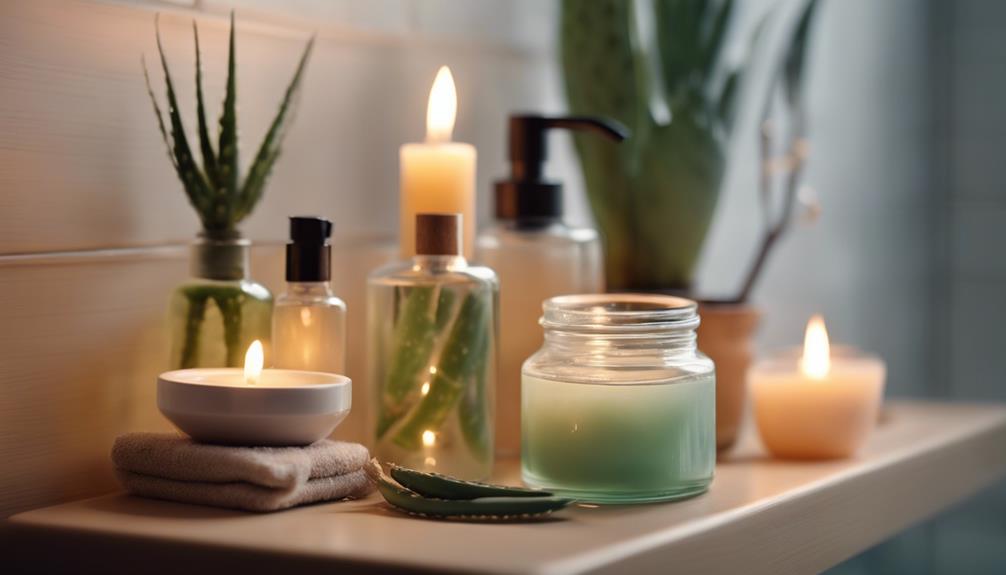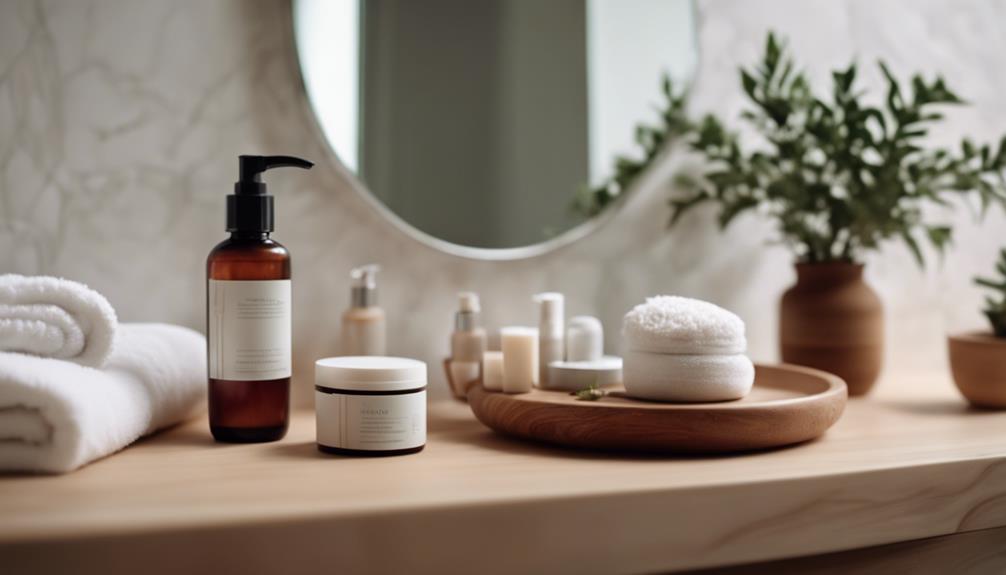Want to achieve a sun-kissed glow without getting burned? To start, it’s important to understand your skin type—fair skin is more prone to burning than darker skin tones. Begin with short tanning sessions and gradually increase your time to prevent looking like a lobster! Always apply broad-spectrum SPF 30 before tanning, and use moisturizing products like lotions with aloe to keep your skin hydrated. Don’t forget to stay hydrated by drinking water; well-hydrated skin is happy skin! Keep a journal to record your tanning experiences, focusing on quality over quantity. If you’re interested, there are safer alternatives to traditional tanning methods! Discover these options by exploring sunless tanning products, which offer a natural-looking tan without the sun exposure risks. Also, check out swim-friendly tanning tips for maintaining your tan while swimming. Remember to wear a waterproof sunscreen and reapply it after swimming to protect your skin while enjoying the water.
Key Takeaways
- Know your skin type to tailor tanning sessions and minimize burn risk effectively.
- Start with short sessions and gradually increase duration based on skin response.
- Always apply broad-spectrum SPF 30 before tanning to protect against UV damage.
- Use protective eyewear during tanning sessions to shield your eyes from harmful rays.
Understanding Skin Type
To get the most out of your tanning experience, it's essential to understand your skin type and how it reacts to UV rays.
Think of your skin as a unique canvas; fair skin might burn faster than darker skin, which can tan more easily. Have you ever noticed how some friends tan while others turn red like a lobster? That's skin type in action!
Consulting a dermatologist can be super helpful—they'll give you personalized tips. Also, don't skip the patch test; it's like a mini audition for your skin's reaction!
Plus, keep an eye out for early signs of burning, like redness or itchiness. Taking these steps means you'll enjoy that golden glow without the unwanted ouch!
Safe Tanning Practices

Starting with short tanning sessions helps your skin adjust to UV exposure while minimizing the risk of burns. Think of it like training for a race; you wouldn't sprint 10 miles on your first day, right? Gradually increase your time in the sun or tanning bed, paying attention to how your skin reacts. Always follow salon guidelines and don't forget protective eyewear—your eyes deserve some TLC too!
Here's a quick reference table to help you remember:
| Tanning Time | Skin Reaction | Next Steps |
|---|---|---|
| 5-10 mins | Slight warmth | Increase gradually |
| 15-20 mins | Mild redness | Take a break |
| 30+ mins | Pain or blistering | Stop & consult a pro |
Keep your skin happy and safe!
Quality Tanning Products
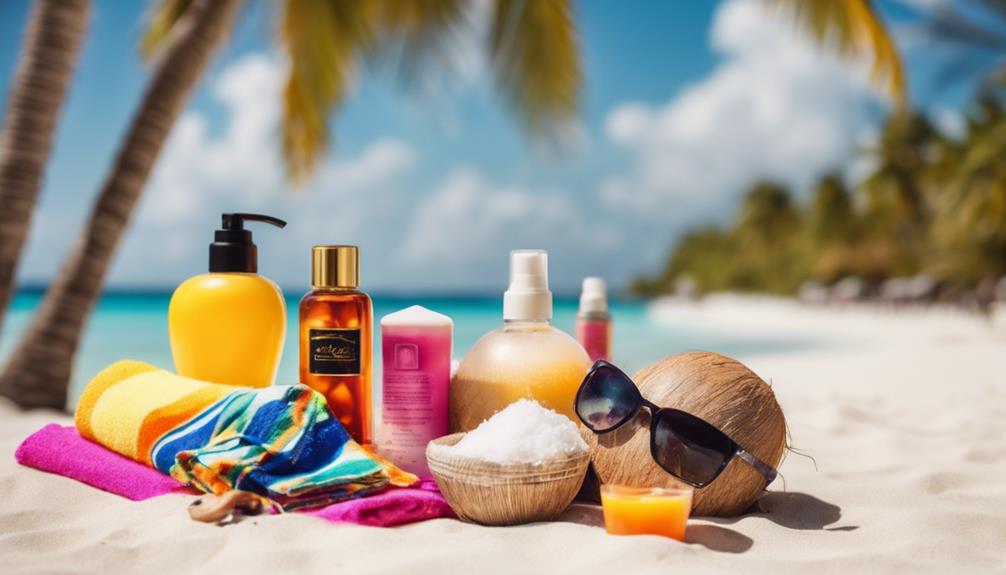
Choosing the right tanning products can greatly enhance your indoor tanning experience while ensuring your skin stays healthy and protected. You wouldn't wear flip-flops in the snow, right? Similarly, picking the perfect tanning lotion is essential!
Here are some tips to keep in mind:
- Opt for lotions designed for indoor tanning, packed with hydrating goodies like aloe and coconut oil.
- Look for high SPF to shield your skin from UV rays.
- Try bronzing boosters for that extra glow; just spread it evenly for a flawless tan!
- Always apply broad-spectrum SPF 30 before your tanning session.
With the right products, you'll be on your way to a beautiful, burn-free tan!
Hydration and Nutrition

Staying hydrated and nourishing your skin from within are key factors that can greatly enhance your tanning results and overall skin health.
Think of your skin like a sponge—it needs water to stay plump and radiant! So, drink plenty of water daily; your skin will thank you later.
Eating foods rich in antioxidants, omega-3s, and vitamin C is also super important. Imagine munching on berries or avocados and knowing you're doing something awesome for your skin!
Try to limit caffeine and alcohol, as they can dry you out faster than a raisin in the sun.
And don't forget to moisturize regularly with gentle lotions. Your skin deserves all the love it can get while you're working on that perfect tan!
Monitoring Tanning Frequency
Monitoring your tanning frequency is essential to prevent overexposure and guarantee your skin remains healthy and radiant. Think of it like balancing a seesaw; too much on one side can tip the scales!
Here are some fun tips to help you keep track:
- Keep a tanning journal to note session lengths.
- Set reminders on your phone for tanning days.
- Pay attention to your skin's response after each session.
- Limit tanning to a couple of times a week.
Pre- and Post-Tanning Care
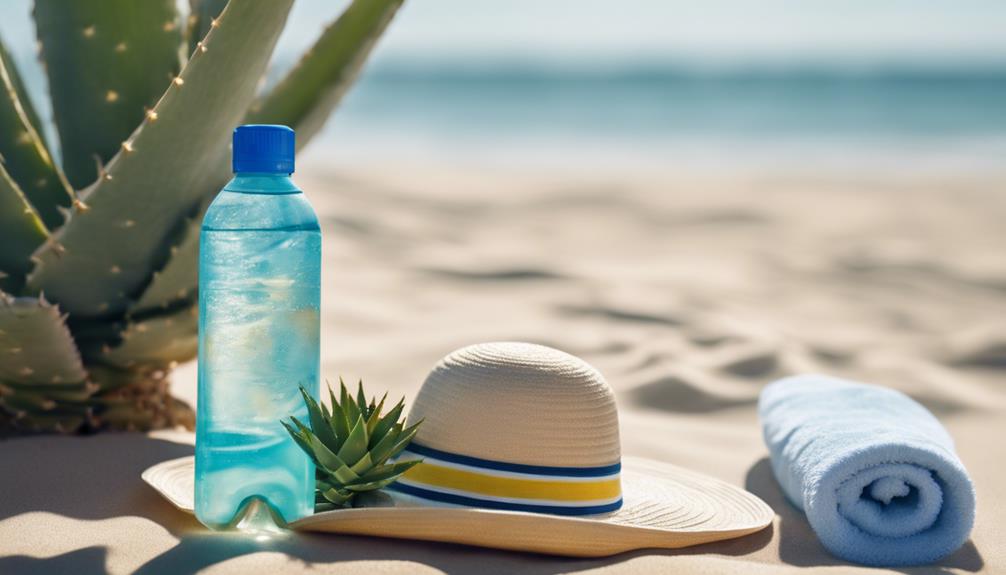
Before you start tanning, applying broad-spectrum SPF 30 is essential for protecting your skin from harmful UV rays. Think of it as your skin's superhero shield—saving you from burns!
Make sure to wear goggles, too, because your eyes need protection from those bright lights.
To get the best tan, gently exfoliate your skin beforehand; it's like prepping a canvas before painting!
After your tanning session, pamper your skin with an after-tan lotion; it helps keep your skin hydrated, making your tan glow even more.
And if your skin feels a bit sensitive, treat it with care. Remember, a little extra love for your skin goes a long way, just like watering a plant helps it thrive!
Alternatives to Tanning Beds

If you're looking for a safer way to achieve a sun-kissed glow, consider self-tanners as an effective alternative to tanning beds. They give you that bronzed look without the harmful UV rays. Plus, you can apply them right at home!
Here are some options to explore:
- Foams and Mists: Easy to apply and quick to dry.
- Lotions: Ideal for a more gradual tan; just rub it in!
- Wipes: Super convenient for on-the-go touch-ups.
- Tanning Drops: Mix these with your moisturizer for a custom tan.
Frequently Asked Questions
How Often Should I Tan for Optimal Results?
You should tan about once or twice a week for best results, gradually adjusting based on your skin's response. Listen to your body and avoid overexposure to maintain a healthy, glowing complexion.
Can I Tan if I Have Sensitive Skin?
If you have sensitive skin, you can tan, but you need to start slow, monitor your skin's reaction, and adjust your sessions. Consulting a dermatologist guarantees you follow safe practices tailored to your needs.
What Are the Risks of Tanning Beds?
Tanning beds pose risks like skin damage, premature aging, and increased cancer chances. You should be cautious, monitor your skin's reaction, and consider alternatives like self-tanners to achieve your desired glow safely. It’s important to educate yourself on tanning bed safety tips to minimize exposure and avoid potential harm. Limiting the frequency and duration of tanning sessions, always wearing protective eyewear, and ensuring the equipment is clean are essential precautions. However, the safest choice is to opt for UV-free options, keeping your skin healthy while achieving your desired look.
Are There Specific Products to Avoid While Tanning?
When tanning, avoid products with alcohol, heavy fragrances, or oil-based ingredients. These can irritate your skin or increase burn risk. Stick to indoor tanning lotions with hydrating properties and protective SPF for the best results.
How Can I Tell if My Tan Is Developing Evenly?
To tell if your tan's developing evenly, check for consistent color across your skin. Look for any patchiness or uneven tones. If you notice discrepancies, adjust your application technique or tanning routine accordingly.
Conclusion
So, think of tanning like baking a cake. You wouldn't throw it in the oven at 400 degrees right away, right? You'd start low and slow, adding heat gradually to get that perfect rise.
The same goes for tanning! By knowing your skin type, using quality products, and staying hydrated, you can achieve that sun-kissed glow without the burn.
Remember, it's all about enjoying the journey to a radiant tan safely—let's keep it sweet!



